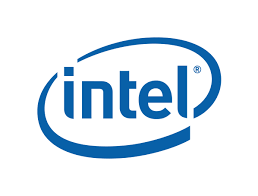
Playing catch up in the rapidly evolving smart phone market, Motorola Inc. unveiled its first Android-based handset and a proprietary service designed to emphasize social networking applications.
The service, Motoblur, syncs contacts, posts, messages, photos and other items from multiple sources including email accounts and social networking services like Facebook, Twitter and MySpace, and automatically delivers them to the smart phone's home screen.
"We really believe that Motoblur is going to be a differentiator for us," said Motorola Co-CEO Sanjay Jha, in introducing the product at the GigaOM Mobilize '09 conference here.
Motorola's new 3G handset will be known as Cliq in the United States and Dext elsewhere in the world, Jha said. It will be available in the United States later this quarter exclusively through T-Mobile, and in other parts of the world sometime in Q4.
Cliq features a 3.1-inch HVGA touchscreen display, a 5Mpixel auto focus camera with video capture and playback at 24fps, a 3.5mm headset jack, a music player with pre-loaded Amazon MP3 store application, Shazam, iMeem Mobile, and a pre-installed 2Gbyte microSD memory card with support for up to 32Gbyte of removable memory, according to Motorola.
Back in the game
After a string of successful products including the popular Razr, Motorola has slipped in recent years. The firm now ranks fourth in the world among handset manufacturers, trailing Nokia, Samsung and LG Electronics. In smart phones, Motorola has been outshone by Apple, Palm, Research in Motion, Samsung and others. Jha acknowledged that the company was in need of compelling new phones.
"It finally looks like Motorola is putting out more competitive devices, which for a while has been a problem," said Allan Nogee, a principal analyst at InStat, of the Cliq introduction.
Tina Teng, senior analyst for wireless communications at market research firm iSuppli Corp., said while Motorola has had a pretty successful smart phone available in China, the firm has lagged behind competitors in the North American market. Teng noted that the success of the Cliq depends not only on the performance and capabilities of the device itself, but also the community developing applications for Android.
"For smart phones, the competition is not in the hardware itself, but the applications," Teng said. "I would expect Motorola added on their own applications, which can be totally different from what we have seen in G1."
The G1, made by HTC Corp., was the first Android-based handset introduced in the U.S. last year.
Nogee said Motorola's entry into the Android-based smart phone market is certainly late, and that the company has foundered for a few years, losing significant market share. But he added that cellphone users are pretty fickle and likely to buy one brand of phone one time and another the next.




 Smaller and thinner than a dime, this tiny silicon chip contains millions of transistors that work together to help you do everything from write a school report to search the Web for the current population of the Svalbard Islands.
Smaller and thinner than a dime, this tiny silicon chip contains millions of transistors that work together to help you do everything from write a school report to search the Web for the current population of the Svalbard Islands.








